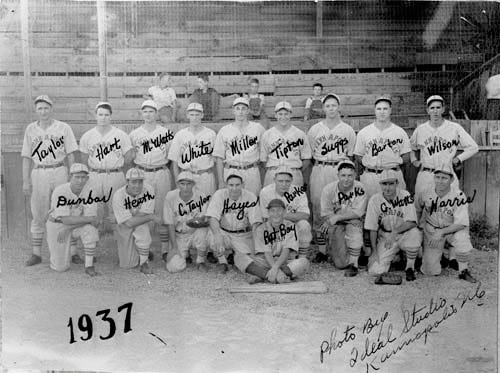Author: NC Department of Natural and Cultural Resources
Keith Price does not wear academic robes — a 1954 graduate of what was then called Wake Forest College, he was in a variety of business ventures through his long working life — but if Forest City in Rutherford County had a historian-in-residence, Price would be it.
And while a guided tour of Forest City, legendary for its Christmas decorations and what’s said by some to be the prettiest downtown in North Carolina, wouldn’t take long, Price could start at his house across from what was the old Cool Springs School and commence class within a three- or four-block radius. His subject today: baseball, which was long the sport of choice in the foothills and still carries the stuff of legend in Forest City.
Price commences any discussion of baseball in the area with a one-question quiz. If the test-taker answers correctly, Price will embark on quite a story. The question: Who’s the most famous baseball player ever to come from Rutherford County? The answer is Smoky Burgess, considered during an 18-year major league career to be the best pinch-hitter of them all.
“They said,” Price remembered, “that you could wake him up out of deep sleep and send him to home plate and he’d get a hit.”
Forest City was home to one of the teams in the “Outlaw League” of the 1930s, a truly fascinating time and one hard to fathom in these days of professional baseball players with million-dollar contracts. In 1936, a number of textile mill owners combined their passion for the sport with their desire to make money and formed the North Carolina Independent League, an “outlaw” professional baseball league. In the pursuit of winning, the owners began hiring professional baseball players, thus incurring the wrath of the major baseball teams, and the President of the National Association of Professional Baseball Leagues, Judge William G. Braham, who identified each of the teams in the newly formed ICBL as an outlaw league. He threatened to ban any player previously signed to another professional team from ever playing in NAPBL.

“The Outlaw Leagues flourished and were a real factor in building communities,” Price said, “Now in Rutherford County, the name of the team was the Owls, and believe it or not, it’s still being used by a collegiate summer league around here. But what happened here, and in Charlotte, Kannapolis, all around here … was part of history. The (textile) mills were behind it. In the Outlaw League, the name came from the fact that many of the players were playing under assumed names. That’s because they were major leaguers, and they weren’t making enough money, so they’d come here and play when they could and the mill owners would give them jobs of a sort.”
Meaning, that their real jobs were to play for the mills’ baseball teams.
The mills are not thriving anymore of course, but the legend of those days lives on still, and Price likely could take visitors on a tour of all the ball fields scattered around the community.
“I know the old mill villages get mixed reviews,” Price says. “But all the mills had teams, and they wanted people to have something to do with their time. So baseball was it. Each mill had a team, and they’d play each other, and the competition was pretty tough, and that’s when the major leaguers started coming in.” The mills, thriving in those days under paternalistic mill owners, had an interest in providing wholesome entertainment.
Ah, but there’s a singular legend in these parts, maybe the best one.
There was a doctor named C.V. Verner, who came to Forest City to set up his practice. He’d tried to play baseball, though, as a young man, and “went about as far as he could go,” Price says.
But he was a big supporter of baseball, and in fact brought night baseball to the county when he bought lights from no less than Branch Rickey, owner of the St. Louis Cardinals.
This brings everything back to this nickname, the owls. “What happened,” Price says, “is that Mrs. Verner said since they were playing at night, why not call them the owls?” And so they did.
And what about the Field of Dreams? The movie starring Kevin Costner — with roles for no less than James Earl Jones and Burt Lancaster — told of a fanciful baseball diamond in Iowa that Costner built from a cornfield. The movie was sentimental, demanded a flight of imagination from fans, and turned out to be wildly popular.
But when Keith Price saw it … “I’ll just say,” Price recalls, “that I could have sworn it was about Dr. Verner.”
Folks in Forest City would say to that: If Price says it, it’s more than likely so.
